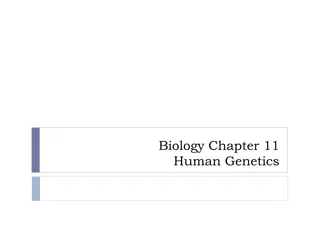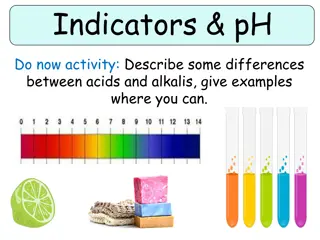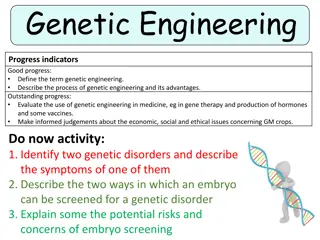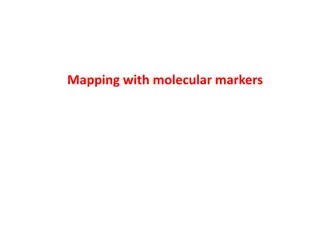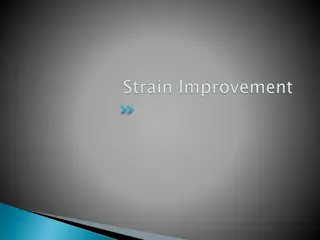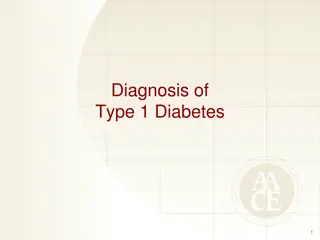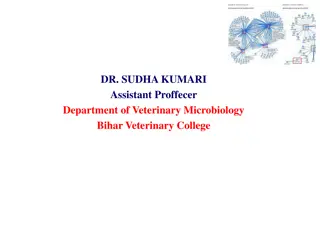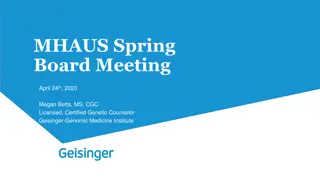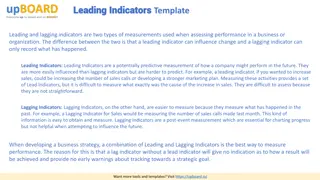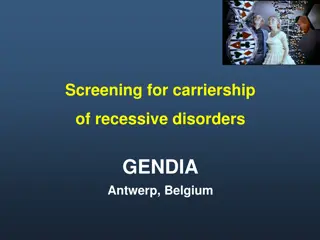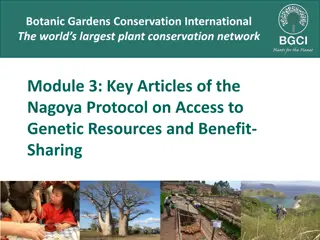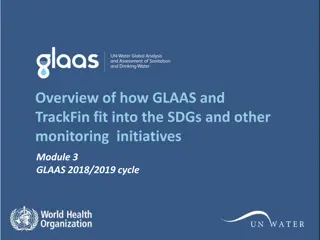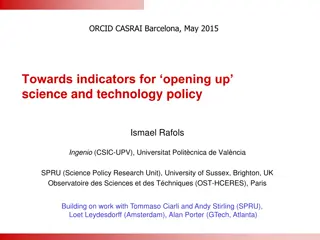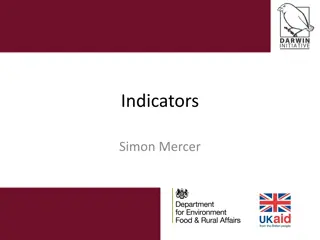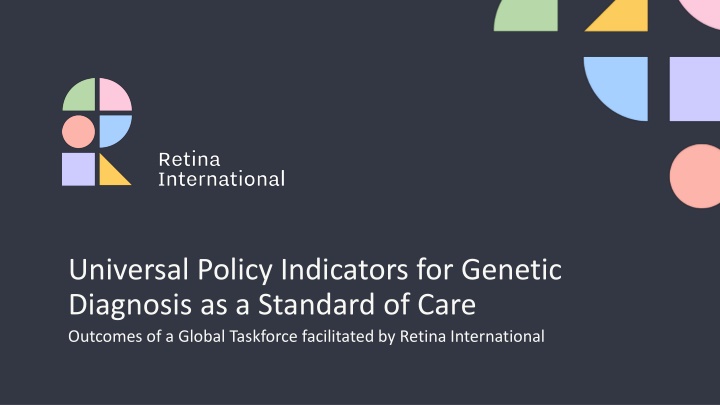
Universal Policy Indicators for Genetic Diagnosis in IRDs
A global taskforce facilitated by Retina International has identified barriers to accessing genetic testing for Inherited Retinal Diseases (IRDs). The taskforce aims to design universal indicators, prioritize best practices, and advocate for equitable and timely genetic diagnostic services. Meetings have highlighted challenges in referral practices, lack of clarity on genetic counseling, and the need for secure funding and innovative solutions to address gaps in genetic services.
Download Presentation

Please find below an Image/Link to download the presentation.
The content on the website is provided AS IS for your information and personal use only. It may not be sold, licensed, or shared on other websites without obtaining consent from the author. If you encounter any issues during the download, it is possible that the publisher has removed the file from their server.
You are allowed to download the files provided on this website for personal or commercial use, subject to the condition that they are used lawfully. All files are the property of their respective owners.
The content on the website is provided AS IS for your information and personal use only. It may not be sold, licensed, or shared on other websites without obtaining consent from the author.
E N D
Presentation Transcript
Universal Policy Indicators for Genetic Diagnosis as a Standard of Care Outcomes of a Global Taskforce facilitated by Retina International
Purpose Background A genetic diagnosis is a prerequisite for IRD patients to be considered for inclusion in research and clinical trials. Genetic testing and counselling can lead to greater understanding by the patient of inheritance patterns and disease progression associated with their gene, and inform decision making. RI has observed a number of barriers to accessing genetic testing and counselling services for IRDs, which can vary from region to region. RI undertook a two-phase study to investigate the current genetic testing and counselling landscape. Phase One and Two Data Generation Receiving a genetic diagnosis and counselling is a long and difficult process Many patients are not being referred for genetic services by HCPs Patients do not have equitable access to best practice genetic testing services for IRDs. These data have created an impetus for RI and its membership to enact effective advocacy for equitable, affordable and timely access to a genetic diagnosis for those living with IRDs.
Genetic Testing Taskforce Objectives Compare and contrast regional and universal challenges regarding process and access to genetic services Evaluate and prioritise best practices for process and access to genetic services Design a set of universal indicators for process and access to genetic services Consult on RI advocacy strategy for further genetic services policy actions. Scope Identify challenges and best practices with regard to genetic services from a global perspective. Scope of discussion included accessibility, equitability, affordability, and timeliness of genetic testing and counselling services.
Meeting 1: Plenary Session on Barriers to accessing a genetic test The experience of receiving a genetic test and genetic counselling should to be referred to as genetic diagnosis. There is a lack of referral to centres of expertise in genetic diagnosis by health care providers. There is a cohort of patients that have not engaged with health care providers, nor received a new genetic test in many years. There is a lack of clarity around what genetic counselling is from within the clinical and policy-making communities. Genetic counselling is often not recognised as a medical discipline. There is a lack of capacity for accessing genetic counselling. The sustainability of foundational support, and the public-private funding model for genetic testing and counselling is a limiting factor and threat to the continued, expanded provision of these services
Meeting 2: Identifying and Prioritising the Solutions to Accessing Genetic Services Proposed solutions developed using OPERA technique characterised by themes: Education and Awareness of all stakeholders Secure, expanded funding for genetic services Provision of universal tools, guidelines, and resources to be used at a local level Innovative solutions for addressing testing deserts, and pooling resources Collection of interoperable real world data at international scale Meeting 3: Reviewing the Proposed Universal Indicators, and consulting on next steps
Developing the Indicators What is an indicator? A quantitative or categorical measures that provide information on conditions and developments that are relevant for the policy making process. Chosen Framework: Building Blocks - OECD Adapted from OECD (Organisation for Economic Co-operation and Development). Building blocks (originally for implementation of SDGs) :
Universal Indicators: Building Blocks Political Commitment; Ensuring that governments have a plan to provide equitable access to a genetic diagnosis for those living with IRDs, and that they intend to carry out Policy Integration and Coordination; Creation of efficient, intelligent policy solutions that allow and encourage different departments and tiers of government to collaborate and work synergistically. This building block also ensures that equitable access to genetic testing for IRDs is considered and protected during the development of all relevant new health policies. Long-Term Perspective; Futureproofing policies to ensure equitable access to genetic testing for those living with IRDs through sustainable funding, and fostering the multi-stakeholder networks required to support sustained policy implementation. Stakeholder Engagement and Education; Increasing awareness amongst all stakeholders about IRDs, the importance of genetic testing, and ways for patients to access it. This indicator also describes the need for structures and fora that enable stakeholders to advise and collaborate on policy development. Monitoring and Reporting; Generating data that supports research, policy implementation, and also ensures accountability of governments in fulfilling political commitments.
Using the Indicators Using the indicators allows consistent and aligned development of advocacy strategies and implementation at a national and global level: The proposed indicators can be used as a self-assessment tool, to aid and support local advocacy efforts. Assessment can be carried out using a scoring rubric to measure and track status and progression These assessments can be submitted to RI to be displayed on the Know Your Code website www.kyc.retinaint.org to promote and encourage international collaboration and information sharing.
Scoring Rubric Traffic Light Scoring system with associated colour and number: 0, White = Indicator not applicable 1, Red = Indicator Not in place 2, Orange = Under Development 3, Yellow = In place but not implemented 4, Light Green = In place, partly implemented 5, Dark Green = In place, functioning Colour Score Title Description 0 Not applicable The Indicator is not applicable to the context where the assessment takes place White 1 Not in place The Indicator under assessment does not exist and there are no pans or actions for putting it in place Red Orange 2 Building Block under development The Indicator does not exist yet, but it is under development Yellow 3 In place, not implemented The Indicator is in place, but it is not implemented (e.g. commitment, but no action) statements of 4 In place, partly implemented The Indicator is in place but the level of implementation is not complete. Light green 5 In functioning place, The Indicator under assessment it complete and relevant. Dark Green
Desired Further Outcome Statements Education and Awareness Consensus driven approach to advocacy Informed multi-stakeholder engagement Building partnerships for the future that strengthen the community Fostering innovative collaboration Reducing inequality Universal Guidelines for access and delivery of Genetic Diagnostics A standard operation procedure that ensures high quality of care and access to a genetic diagnosis, regardless of geography or circumstance. Collection, curation, and utilisation of real world data at international scale Creation of universal international data hub Improved quality of care Generation of real world evidence that drives innovation Funding Dedicated state funding for genetic services, including genetic testing services
Whats next? We are currently preparing for Phase 4: Preparing Stakeholders for Policy Action Objectives: Engagement with medical and research stakeholders Grassroots activation amongst patient advocacy network: Retina International and global Rare Disease communities with similar needs. Effective consensus building Development of the Know Your Code website as a dedicated portal for activities related to this initiative
Thank You! Questions or comments to fiona.waters@retina-international.org



